Search
Search Results
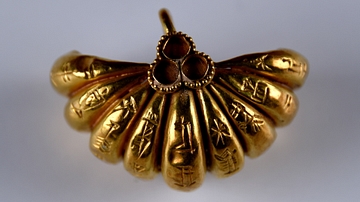
Image
Cuneiform, Gold Earring from Ur III
This is the upper surface of the earring. Note how the cuneiform signs were carved and distributed and their distance from the center. The cuneiform text is read vertically, from the upper surface downwards on each segment, and it continues...

Video
Cuneiform: The Earliest Form of Writing from Ancient Mesopotamia
Cuneiform is a writing system or script which was developed by the ancient Sumerians in Mesopotamia between 3500 and 3000 BCE. It is the earliest form of writing in the world and is thought to have developed so people could communicate long-distance...
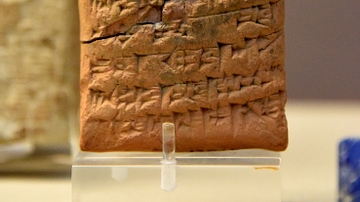
Image
Cuneiform Letter Ordering Men to Go to Court
The cuneiform text of this clay tablet orders men to go to Babylon for a court hearing. This letter from Hammurabi is addressed to an official named Sin-iddinam. Old Babylonian Period, reign of Hammurabi, 1792-1750 BCE. From Larsa, Southern...

Image
Cuneiform Writing
A relief of cuneiform writing from Assyria.
Exhibited in the British Museum London.

Image
Cuneiform Tablets in Sumerian
Carved stone cuneiform tablets in Sumerian.
Left: Temple of Ningirsu, Girsu. Right: Temple of Nindara, Ur. Dating around 2141-2122 BCE.
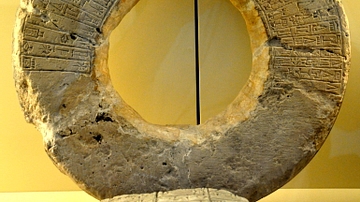
Image
Cuneiform Inscribed Well Curb
A stone ring of a well curb with cuneiform inscriptions which mention the name of the king Shu-Sin of Ur. Ur III, 2030 BCE. From southern Mesopotamia, Iraq. (The Pergamon Museum).
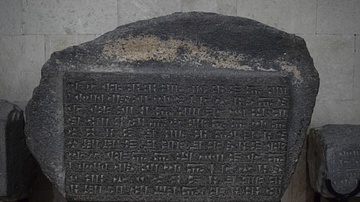
Image
Cuneiform Inscription of Arguishti
The famed "Cuneiform of Arguishti," which celebrates his construction of the fortress of Erebuni in 782 BCE and his martial exploits in nearby regions. (Erebuni Historical and Archaeological Preserve, Yerevan, Armenia.)
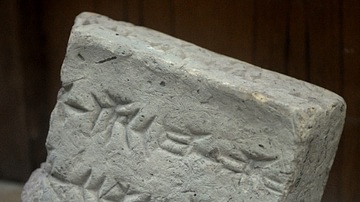
Image
Assyrian Cuneiform Brick
The cuneiform inscriptions on this mud-brick mention the name of Ashurnasirpal II, the Assyrian king. From northern Mesopotamia, modern-day Iraq. Neo-Assyrian period, reign of Ashurnasirpal II, 883-859 BCE. The Sulaymaniyah Museum, Iraq.

Definition
Writing
Writing is the physical manifestation of a spoken language. It is thought that human beings developed language c. 35,000 BCE as evidenced by cave paintings from the period of the Cro-Magnon Man (c. 50,000-30,000 BCE) which appear to express...
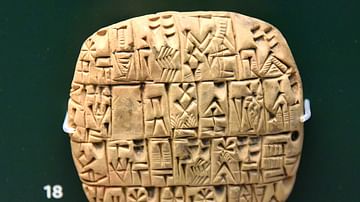
Article
Hymn to Nisaba
The Hymn to Nisaba (c. 3rd millennium BCE) is a poem praising Nisaba, the Sumerian goddess of writing and accounts who also served as scribe of the gods. The poem is officially dedicated to Enki, the god of wisdom (sometimes given as her...